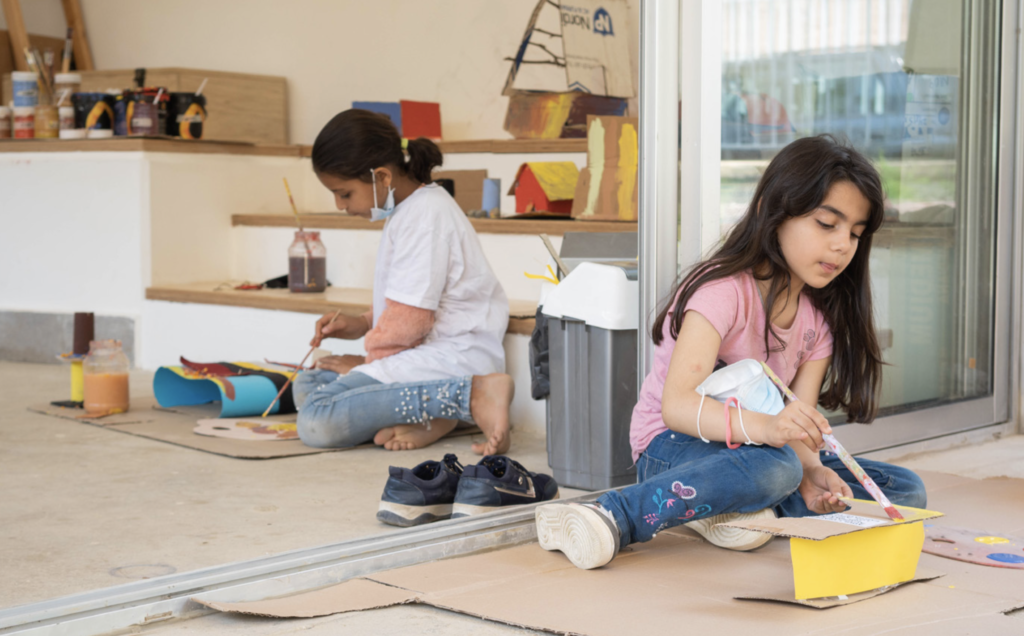Engaging children in participatory design activities can have a significant impact on their development, capacities, and wellbeing. Children’s engagement in participatory processes can enhance social and cognitive skills, while increasing their sense of connection to other people and to nature (Sutton and Kemp, 2002). Children’s participation is valued as an effective approach for improving children’s self-esteem, empowering them, teaching new skills, and developing them into more active and responsible citizens (Sabo, 2001).
Given the significant diversity in children’s needs and capacities at different ages, tailoring methods and approaches is fundamental. Through the use of age-appropriate methods, children may acquire knowledge, develop skills, build friendships and wider support networks, be heard, gain a sense of control and be taken seriously. For example, Syrian refugee children interviewed after they participated in the co-design of a playground in Lebanon with CatalyticAction said that they felt equipped with the knowledge to build their own playground once they returned to Syria.
Participatory design can also help children overcome mental, physical, and social issues that they might be experiencing, including social exclusion. When children are involved in participatory processes, they can work within developmentally appropriate structures that promote a sense of group membership and accountability, and hence experience empowerment and diminished alienation. Children who are alienated from the rewards of mainstream society get a chance – through participatory processes – to be part of a new situation that allows them to earn the approval of their caregivers, neighbours, friends and oneself (Sutton and Kemp, 2002). The co-design tools presented in this handbook not only encourage play and empowerment, but also promote collaboration, playing and learning together, and are important for the socialisation of children.

Engaging children affected by displacement in conversations around the production of their environments can be empowering, especially for those who have experienced a loss of place and social networks. By giving children a sense of control, the participation of children in constructing their surroundings increases the meaning places have for them. The meaning of places, and people’s attachment to them, come from the relationship of people to those places through personal, group and cultural processes (Sutton and Kemp, 2002). Visioning and ultimately building spaces can be a healing process for some children who have had their place attachments impacted by displacement (Severcan, 2015).
Engaging children’s caregivers in the participatory design process can also empower them and therefore have an impact on the broader society, especially on mothers and sisters who are often marginalised from decision making processes. Children’s participation is also important for designers who can learn about users’ culture, society, and living conditions, particularly where the cultural gap between designers and children affected by displacement is substantial (Sabo, 2001).
Children’s insights, strengths and creativity are often overlooked. Children have both vulnerabilities and resilience, which will evolve depending on
a diverse set of factors. While many interventions with refugee children focus on addressing negative development outcomes, it is important to understand what fosters resilience and builds on children’s own insights and strengths (Tol, Song & Jordans, 2013). Co-design processes can, at a neighbourhood and community level, help foster and strengthen such resilience, while addressing related vulnerabilities.



